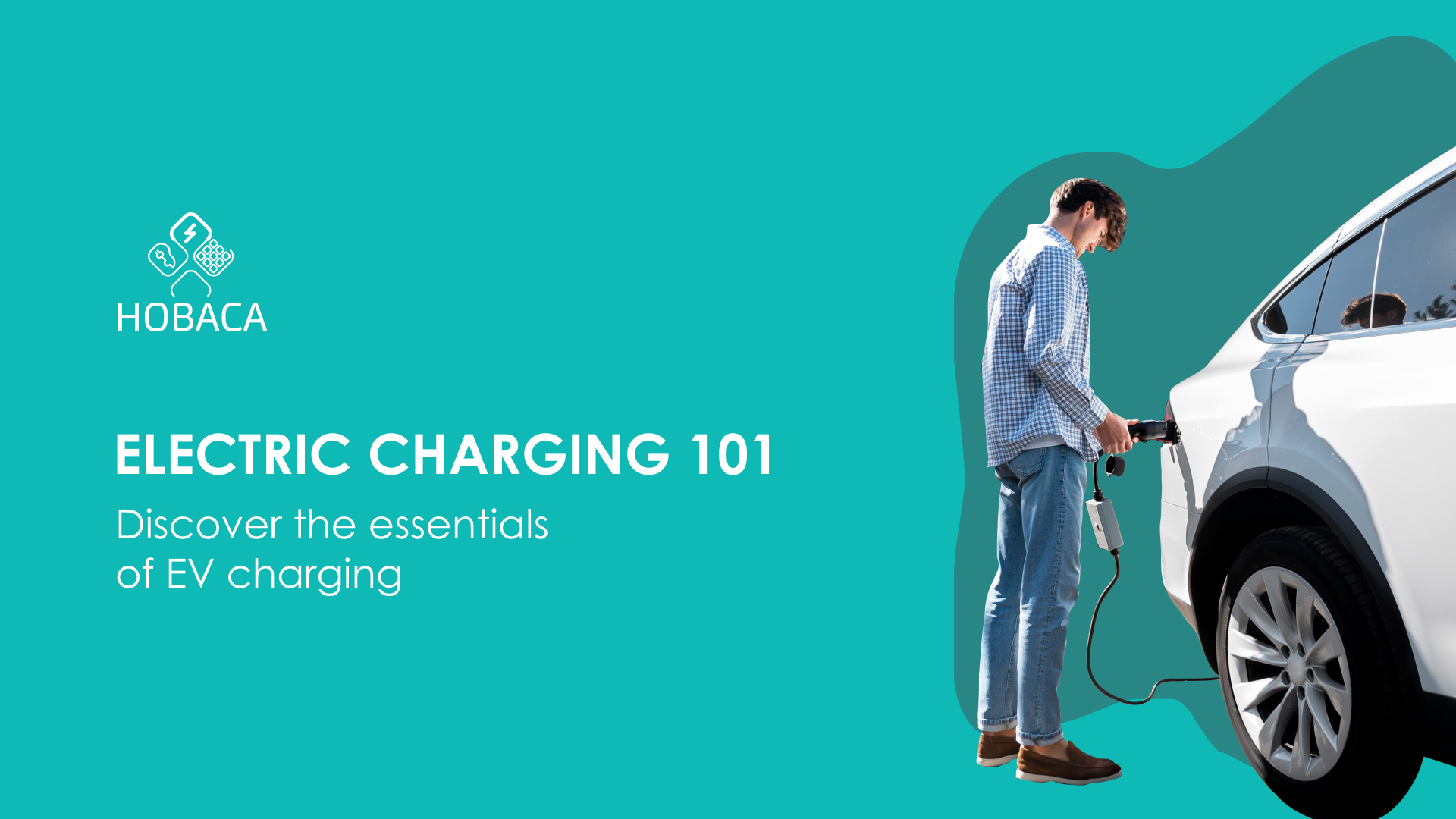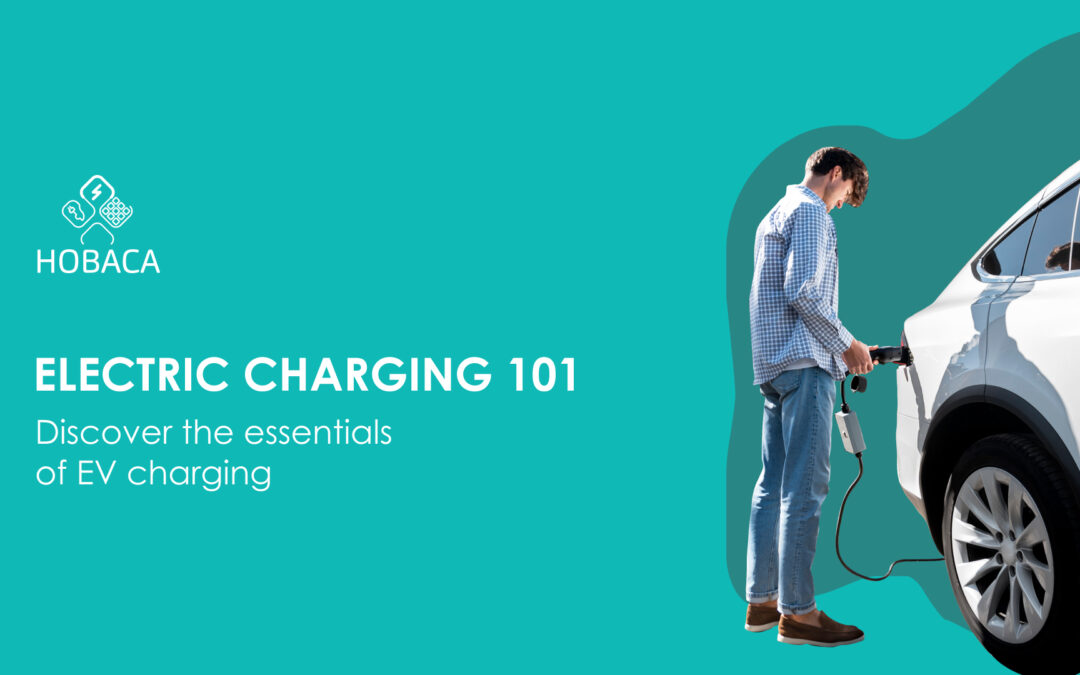Understanding the Evolution: OCPP 1.6 vs. OCPP 2.0.1 in the EV Charging Industry
As electric vehicles become increasingly mainstream, the infrastructure supporting them is also evolving rapidly and supporting transportation evolution. A key component of this infrastructure is the communication protocol that allows EV charging stations to interact with central systems such as backend software and grid management systems. The Open Charge Point Protocol (OCPP) is the leading standard for this purpose, and its evolution reflects the growing complexity and demands of the EV ecosystem. In this blog, we’ll explore the differences between OCPP 1.6 and OCPP 2.0.1, currently the most prominent version in use and version that is supposed to make development and evolution smoother and easier for each party involved.
What is OCPP?
OCPP, short for Open Charge Point Protocol, is an open-source communication standard for EV charging stations. It was developed by the Open Charge Alliance (OCA) to enable interoperability between different charging station vendors and network operators. By adhering to a common protocol, various stakeholders can ensure that their systems are compatible, fostering a more integrated and efficient charging network.

OCPP 1.6: The Workhorse of the Early EV Era which is still dominant in EV practical use
Released in 2015, OCPP 1.6 has been widely adopted and remains in extensive use. It introduced several important features that addressed the initial needs of the EV charging market:
- Basic Messaging Structure: OCPP 1.6 provides a robust framework for basic charging operations, including starting and stopping sessions, heartbeats, status notifications, and transaction management.
- Session Management: The protocol supports basic operations such as starting and stopping charging sessions. Each transaction is identified by a unique transaction ID, which is used to track the session from initiation to completion.
- Security Enhancements: This version improved upon earlier versions by introducing secure WebSocket communications, which provided a higher level of data integrity and security.
- Remote Control: Operators gained the ability to remotely control charging stations, including firmware updates, diagnostics, and resetting of the stations.
- Smart Charging: Although limited, OCPP 1.6 included functionalities for smart charging, allowing operators to manage power distribution based on availability and demand.
- Simple Authorization: Transactions can be authorized via RFID cards or remote commands from the central system. However, the range of authentication methods is limited.
Despite its strengths, OCPP 1.6 has limitations, particularly in handling the increasing complexity and advanced features required by the rapidly evolving EV industry. The most significant flaw of this version of the protocol is the lack of Plug&Charge concept, which will be described later in the blog.
OCPP 2.0.1: The Next-Generation Protocol suited to boost Electrification of Transportation
OCPP 2.0.1, released in 2020, represents a significant leap forward. It addresses the limitations of OCPP 1.6 and introduces a suite of new features designed to support the advanced needs of modern EV infrastructure. Key enhancements are clear in several points:
Transaction Handling
- Detailed Session Data: This version supports more granular data collection, providing detailed information on energy consumption, session duration, and intermediate meter readings. This data is crucial for accurate billing and analytics.
- Enhanced Notifications: The protocol offers more comprehensive status updates, including detailed error codes and real-time monitoring of the charging process.
- Advanced Authorization: OCPP 2.0.1 supports multiple authorization methods, including RFID, app-based authentication, and ISO 15118-based Plug&Charge. This flexibility enhances user convenience and security.
- Transaction Events: The new version introduces specific transaction events such as reservation start/end, pause/resume charging, and user-specific actions. These events offer better control and visibility over each charging session.
Load Balancing
- Dynamic Load Balancing: This version supports dynamic load balancing, allowing real-time adjustment of power distribution based on current demand, grid conditions, and individual EV requirements. This is particularly beneficial for optimizing energy use and integrating renewable energy sources.
- Advanced Demand Response: The protocol enables more sophisticated demand response strategies, such as varying power levels based on grid signals, user preferences, and pricing models. This helps in flattening demand peaks and utilizing off-peak energy more effectively.
- Grid Integration: Enhanced capabilities for grid integration, including Vehicle-to-Grid (V2G) support, allow charging stations to not only draw power from the grid but also return excess power, contributing to grid stability.
Plug&Charge Concept
The Plug&Charge concept is a revolutionary feature introduced in OCPP 2.0.1, significantly enhancing user convenience and security.
- Seamless Authentication: OCPP 2.0.1 fully supports the Plug&Charge concept, allowing seamless and automatic authentication and billing. When a user plugs in their EV, the vehicle and charging station communicate directly, exchanging certificates and authorizing the transaction without user intervention.
- Enhanced Security: This process is secured by using digital certificates, ensuring that only authorized vehicles can initiate charging sessions. This enhances security and reduces the risk of unauthorized use.
- User Convenience: Plug&Charge eliminates the need for physical cards or manual authentication steps, streamlining the user experience and making the process more user-friendly, particularly for frequent users.
Conclusion
As the EV industry continues to grow and evolve, so too must the protocols that underpin its infrastructure. OCPP 1.6 laid a solid foundation, addressing the essential needs of early EV charging networks. However, as demands for security, data management, smart charging, and user experience have increased, OCPP 2.0.1 has emerged as the next-generation standard. By understanding these differences, stakeholders can make informed decisions about implementing and upgrading their EV charging systems, ensuring they are well-equipped to meet current and future demands.
The advancements in OCPP 2.0.1 over OCPP 1.6 reflect a significant leap in the capabilities and sophistication of EV charging infrastructure:
- Transaction Handling: OCPP 2.0.1 offers more detailed session data, comprehensive status updates, advanced authorization methods, and specific transaction events, providing better control and transparency.
- Load Balancing: Dynamic load balancing and advanced demand response in OCPP 2.0.1 enable more efficient energy use, better grid integration, and support for renewable energy sources.
- Plug&Charge: The seamless authentication and enhanced security of the Plug&Charge feature in OCPP 2.0.1 provide a significant boost in user convenience and operational efficiency.
In an industry where technology and standards are rapidly evolving, staying informed and adaptable is key. OCPP 2.0.1 represents a significant step forward, providing the tools necessary to build a robust, secure, and efficient EV charging infrastructure for the future.
-
What is OCPP?
OCPP, or Open Charge Point Protocol, is an open-source communication standard developed by the Open Charge Alliance (OCA) for EV charging stations.
It ensures interoperability between different charging station vendors and network operators, fostering a more integrated and efficient charging network.
-
What are the key features of OCPP 1.6?
OCPP 1.6 includes the following key features:
Basic Messaging Structure: Supports starting/stopping sessions, heartbeats, status notifications, and transaction management.
Session Management: Tracks sessions with unique transaction IDs.
Security Enhancements: Uses secure WebSocket communications for data integrity and security.
Remote Control: Allows remote firmware updates, diagnostics, and resetting.
Smart Charging: Provides limited power distribution management.
Simple Authorization: Supports transactions via RFID cards and remote commands.
-
Why is OCPP 1.6 still widely used?
Despite its limitations, OCPP 1.6 remains dominant due to its robust framework for basic charging operations and its extensive adoption since its release in 2015.
-
What are the limitations of OCPP 1.6?
The most significant limitation of OCPP 1.6 is its lack of support for the Plug&Charge concept, which simplifies and secures the authentication process.
-
What advancements does OCPP 2.0.1 introduce over OCPP 1.6?
OCPP 2.0.1 introduces several advancements over OCPP 1.6, including:
Transaction Handling: More detailed session data, enhanced notifications, advanced authorization methods, and specific transaction events.
Load Balancing: Supports dynamic load balancing and advanced demand response strategies.
Grid Integration: Improved grid integration capabilities, including Vehicle-to-Grid (V2G) support.
Plug&Charge: Seamless authentication and enhanced security using digital certificates.
-
How does OCPP 2.0.1 improve transaction handling?
OCPP 2.0.1 provides more granular data collection, detailed status updates, supports multiple authorization methods, and introduces specific transaction events for better control and visibility.
-
What benefits does dynamic load balancing in OCPP 2.0.1 offer?
Dynamic load balancing allows real-time adjustment of power distribution based on demand, grid conditions, and EV requirements.
This optimizes energy use and integrates renewable energy sources effectively.
-
What is the Plug&Charge concept in OCPP 2.0.1?
Plug&Charge is a feature that enables seamless and automatic authentication and billing when an EV is plugged in.
It enhances security with digital certificates and improves user convenience by eliminating the need for physical cards or manual authentication steps.
-
Why is OCPP 2.0.1 considered a significant leap forward?
OCPP 2.0.1 addresses the limitations of OCPP 1.6 and introduces advanced features necessary for modern EV infrastructure, such as enhanced transaction handling, dynamic load balancing, grid integration, and the Plug&Charge concept.
-
What should stakeholders consider when upgrading to OCPP 2.0.1?
Stakeholders should consider the advanced capabilities of OCPP 2.0.1 in handling detailed session data, supporting multiple authorization methods, optimizing energy use through dynamic load balancing, and enhancing user convenience with Plug&Charge.
These features ensure a robust, secure, and efficient EV charging infrastructure.





